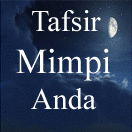The Late Proterozoic–Late Paleozoic supercontinent of the Southern Hemisphere, named
by Eduard Suess after the Gondwana System of southern
India. The name Gondwana means “land of the Gonds” (an
ancient tribe in southern India) so the more common rendition
of the name Gondwanaland for the southern supercontinent
is technically improper, meaning “land of the land of the
Gonds.” It includes the present continents of Africa, South
America, Australia, Arabia, India, Antarctica, and many
smaller fragments. Most of these continental masses amalgamated
in the latest Precambrian during closure of the Mozambique
and several other ocean basins and persisted as a
supercontinent until they joined with the northern continents
in the Carboniferous to form the supercontinent of Pangea.
The different fragments of Gondwana are matched with
others using alignment between belts of similar-aged deformation,
metamorphism, and mineralization, as well as common
faunal, floral, and paleoclimatic belts. The formation
and breakup of Gondwana is associated with one of the most
remarkable explosions of new life-forms in the history of the
planet, the change from simple single-celled organisms and
soft-bodied fauna to complex, multicelled organisms. The
formation and dispersal of supercontinents strongly influences
global climate and the availability of different environmental
niches for biological development, linking plate
tectonic and biological processes.
Since the early 1990s there has been an emerging consensus
that Gondwana formed near the end of the Neoproterozoic
from the fragmented pieces of an older supercontinent,
Rodinia, itself assembled near the end of the Grenville cycle
(~1100 Ma). The now standard model of Gondwana’s assembly
begins with the separation of East Gondwana (Australia,
Antarctica, India, and Madagascar) from the western margin
of Laurentia, and the fan-like aggregation of East and West
Gondwana. The proposed assembly closed several ocean
basins, including the very large Mozambique Ocean, and
turned the constituents of Rodinia inside out, such that the
external or “passive” margins in Madagascar and elsewhere
became collisional margins in latest Precambrian and earliest
Cambrian time.
The notion of a single, short-lived collision between East
and West Gondwana is an oversimplification, since geologic
relations suggest that at least three major ocean basins closed
during the assembly of Gondwana (Pharusian, Mozambique,
Adamastor), and published geochronology demonstrates that
assembly was a protracted affair. There is currently a large
amount of research being done to understand these relationships.
For example, an alternative two-stage model for closure
of the Mozambique Ocean has been recently advanced that
ascribes an older “East African” orogeny (~680 Ma) to collision
between Greater India (i.e., India–Tibet–Seychelles–Madagascar–
Enderby Land) and the cojoined Congo and Kalahari
Cratons. This was followed by a younger “Kuunga” event
(~550 Ma) that represents the collision of Australia–East
Antarctica with proto-Gondwana, thus completing Gondwana’s
assembly near the end of the Neoproterozoic.
See also NEOPROTEROZOIC; SUPERCONTINENT CYCLE.
GPS See GLOBAL POSITIONING SYSTEM.

















Tidak ada komentar:
Posting Komentar
Catatan: Hanya anggota dari blog ini yang dapat mengirim komentar.